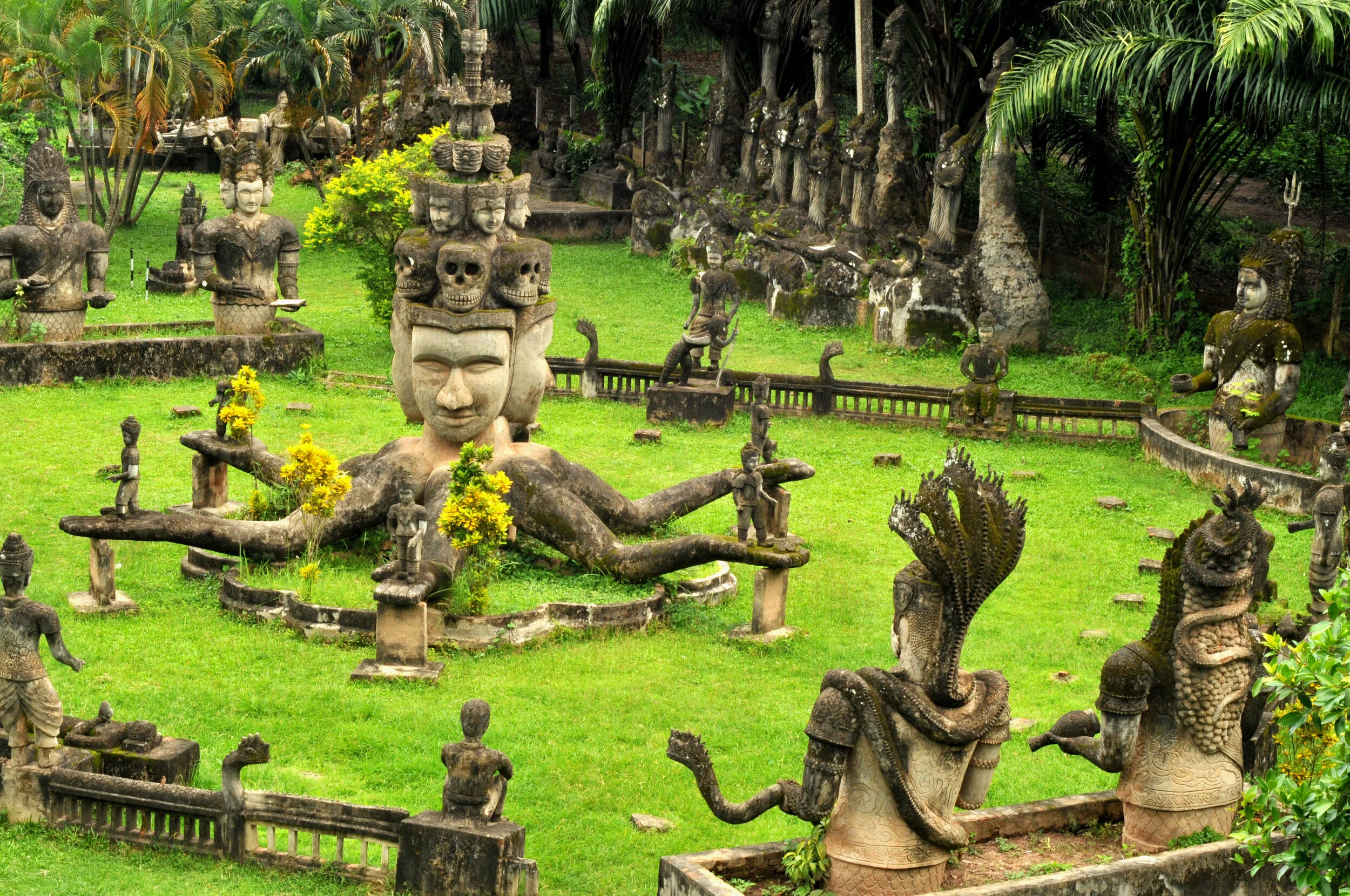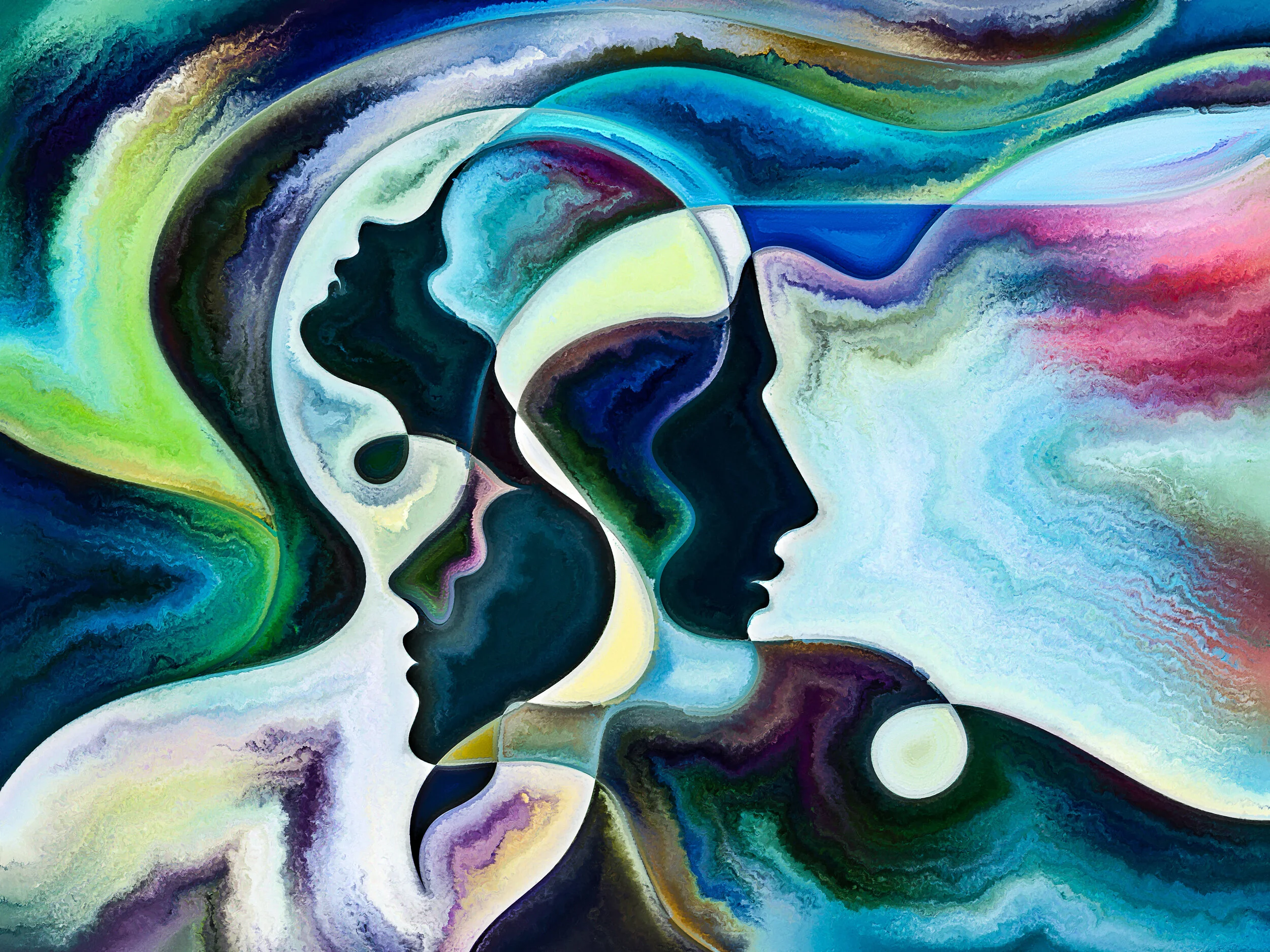The Yogic Perspective on Desire
Desire becomes a vehicle to your liberation when you trace it back to its source and realize that your desire for some external situation (whether a car, a spouse, whatever) is really a desire for the feeling, the flavor of consciousness, that having that thing will bring you. — Christopher Willis, Tantra Illuminated
Many people on the spiritual path have a complicated relationship with desire. Because of something we heard or read somewhere we see desire as part of the “problem,” an obstacle on the path. We harshly criticize ourselves for having desires, forgetting that we exist because of desire, that everything exists because of desire—the desire of Consciousness to dance, to play, to experience every possible way of being. Perhaps we deny our most ”basic” desires, or judge ourselves for succumbing to them. On top of all that, for those on the spiritual path, there is the added burden of worrying that we’re attached to our desire to expand, to transcend, to reach some kind of enlightened state. And we may very well be. It can get quite complicated.
People often quote the Buddha on desire, misquoting him as saying that desire is the root of the problem, the aspect of human nature that stands in the way of enlightenment. But this is not what the Buddha taught at all. Instead, he recognized that desire can lead to suffering if one is stuck in a state of ignorance and unconscious, habitual living. Like many yogis before him, he taught that the consciousness and its desires must be refined instead. As we’ll see, the key is to practice yoga, to cultivate a state of yoga in which non-attachment and non-neediness naturally arise. As Krishna counsels Arjuna in The Bhagavad Gita, yoga is a state in which Arjuna can act in accordance with his true desires, spontaneously without attachment to the fruits of his actions.
In short, there are two interlocking parts to approaching desire from a yogic perspective, to using desire for your continued expansion and celebration: (1) removing ignorance and impurities so that authentic desire flows forth and (2) practicing non-attachment to the outcomes of your desires.
The Tantrikas of the sixth to eleventh centuries CE had arguably the best perspective on desire, in part because they were least uptight yogis; they knew how to really live. They used the realm of the senses in order to access unity consciousness. For them, desire could be used as a vehicle toward enlightenment. Because the Tantrik view is that desire is an expression of the natural creative impulse of the Goddess at varying level of consciousness, a joyful self-expression of Creation (icchā in Sanskrit). The challenge arises when this natural desire is diluted by conditioning (samskaras) and ignorance (avidya), by impurities and obstructions of various sorts.
In other words, there are two types of desire: (1) desire arising from conditioning and (2) undiluted desire arising as a spontaneous expression of embodied Consciousness.
In yoga we cultivate the second kind of desire. We then move from karma to dharma.
Samskaras
Samskaras are essentially old, unconscious patterns that influence our thoughts and behavior. They are our societal and familial conditioning. And the more we act on this conditioning, the deeper the grooves of the samskaras that we act upon. This is why most people are not really free: They are automatons unconsciously acting out their karma and their samskaras. And this is where yoga provides powerfully effective tools for breaking these old patterns.
Some ways we can metabolize and let go of our samskaras is through a strong intention, or sankalpa, and through tapaha (the heat of intensity). We commit fully to ourselves, our practice, and our expansion. Self discipline is a great form of tapaha. We practice with intensity and passion. We go all the way. Challenging yoga practices of all kinds are a great form of tapaha, especially the kriyas and energetic work of Elemental Yoga. And, of course, consistent meditation is equally effective. The more we meditate the more we become aware of our unconscious patterns and the more we can apply the heat of intense commitment to transcending them.
Revealing Our Innate Wisdom
Another impediment to our desire that clouds the natural flow of Nature’s desire in us is ignorance—avidya in Sanskrit. Many yoga practices are also designed to increase our wisdom (vidya), thereby decreasing our ignorance (avidya). Some of the practices that increase our self-awareness and help to correct our intellect include:
Meditation (see below)
Kriyas designed to correct the intellect
Attending satsangs / wisdom talks with a wise teacher or members of your sangha who are also dedicated to practicing yoga
Reading sacred yogic texts, like The Bhagavad Gita, The Yoga Sutras, The Upanishads, and The Recognition Sutras
Wisdom can exist at three levels within the self: the mind, the heart, and the soul. We want to cultivate practices and a general orientation toward life in which we begin to store our knowledge in the heart, and ultimately in the soul. Knowledge embedded at the soul level naturally becomes wisdom. Knowledge at the mind level has a tendency to be more conceptual and can only be inherently limited.
Yoga is a journey through the mind into the heart and soul.
Meditation
I’ve mentioned meditation a few times. Meditation is a topic for an entirely separate blog post. But one aspect of meditation that’s relevant here is that it puts us in a theta brain wave state, where we can access the subconscious mind. At first this might seem like it’s generating more thoughts but in actuality you’re releasing your samskaras, the subtle impressions of your past actions. Through meditation our deeply authentic desires can begin to flow more freely. Again, it can be a powerful means for uncovering samskaras and transcending them. Patanjali tells us that so-called “obstacles” or “setbacks” arise so that we can release our samskaras. If you can dedicate yourself to this practice then your desires will start to take on a certain sweet fragrance, and thereby be more naturally and easily fulfilled, especially if you are totally unattached to whether they are fulfilled. Now that’s yoga!
As the Tantrikas would say, meditation is one process of refining our thought constructs so that they are more in alignment with the true nature of reality. Desires then become the pure expression of Nature’s desires flowing through your uniquely beautiful expression of Totality.
Vairāgya / Non-Attachment
We’ve established that it’s okay to have desires, so long as they are refined and a pure expression of the Goddess flowing through you. It’s being attached to the fruits of our actions that creates suffering and more karma.
We have to be okay whether or not our desires are satisfied. But also, as we move more in alignment with the icchā of the Goddess moving within us, our desires begin to naturally be fulfilled. The closer our desires come to a simple desire to experience the radiance of Consciousness within, the more easily that is to attain. In other words, the less we want mundane objects and experiences that merely satisfy the senses the less we will find ourselves frustrated or disappointed. Again, it’s not that we can’t enjoy the pleasures of the senses, and even use them in our practice toward liberation. It’s just that the desire for those things naturally diminished the more we practice.
Aparigraha / Non-Grasping
Patanjali addresses desire and nonattachment when he discusses aparigraha, one of the yamas of Patanjali’s eight limbs of yoga in The Yoga Sutras. Aparigraha is an aspect or experience of the state of yoga in which your needs fall away. It is a state of non-neediness that arises from the practice of yoga. When you are in this state, your desires will be natural, easeful. It’s what we’ve been talking about all along: The more you’re in a state of yoga, the more your desires are in alignment with the desires of Nature seeking to flow through and be expressed by you.
Similarly, Patanjali describes the state of santosha, one of the niyamas, as the state of great abundance where nothing is missing. The more we practice, the more we marinate in this expansive state of pure abundance. We live abundantly, unattached to the abundance. We begin to radiate abundance, to exist in a radiant field of abundance. Desire then becomes more of a dance than a desperate grasping.
Conclusion
Your desires are beautiful. I hope that you, dear reader, realize all of your most treasured desires. As one of my teachers likes to say, if it’s in your consciousness then it is possible. But also practice.
I’ve been doing a little dance with some intense desires lately myself, being present with them to see if they’re authentic or so deeply rooted in my conditioning that I can’t tell the difference. For example, I’ve been working on a book off and on for the past few years and my desire to finish it has evaporated, leaving me wondering what the initial desire was all about. So I’m doing my best to allow those desires to reveal what it is they are seeking to reveal to me, and to ensure that they are pure, undiluted desires arising from the depth of my soul. I’m asking myself whether it’s still an expansive desire that is leading me toward increasing values of liberation.
As we learned above, the key is knowing when a desire is a conditioned desire—something you should want—and when desire is an authentic desire—what you want from the depths of your being. As Alan Watts put it, “to know what you want, not what you ought to want.”
Instead of trying to relinquish desire just be present to what is and relax. The more you cultivate the state of yoga, the more the unblemished desires of Nature will flow through you. Ask yourself whether any particular desire will contribute to your expansion or unfettered celebration, or instead to the furtherance of attachment and suffering.
Practice yoga. Be completely present. Tune into what Nature wants to express through you. Take spontaneous right action from that state. This is living in accordance with pure desire. This is living purposefully, in the heart of our dharma, free of karma.
As we move from karma to dharma, our desires naturally attain a pure, sattvic quality, leading to ever greater states of expansion and liberation.
All desire is ultimately a desire for Unity. Purify yourself and channel your desires toward expansion and unity.
Let yourself not be satisfied until your desire leads you intensely beyond the confines of your conditioned self into the liberation of Union. Then you act in the world as a glorious expression of your true Self.
The quiet voice is the hardest to listen to. But it speaks the loudest truths.



